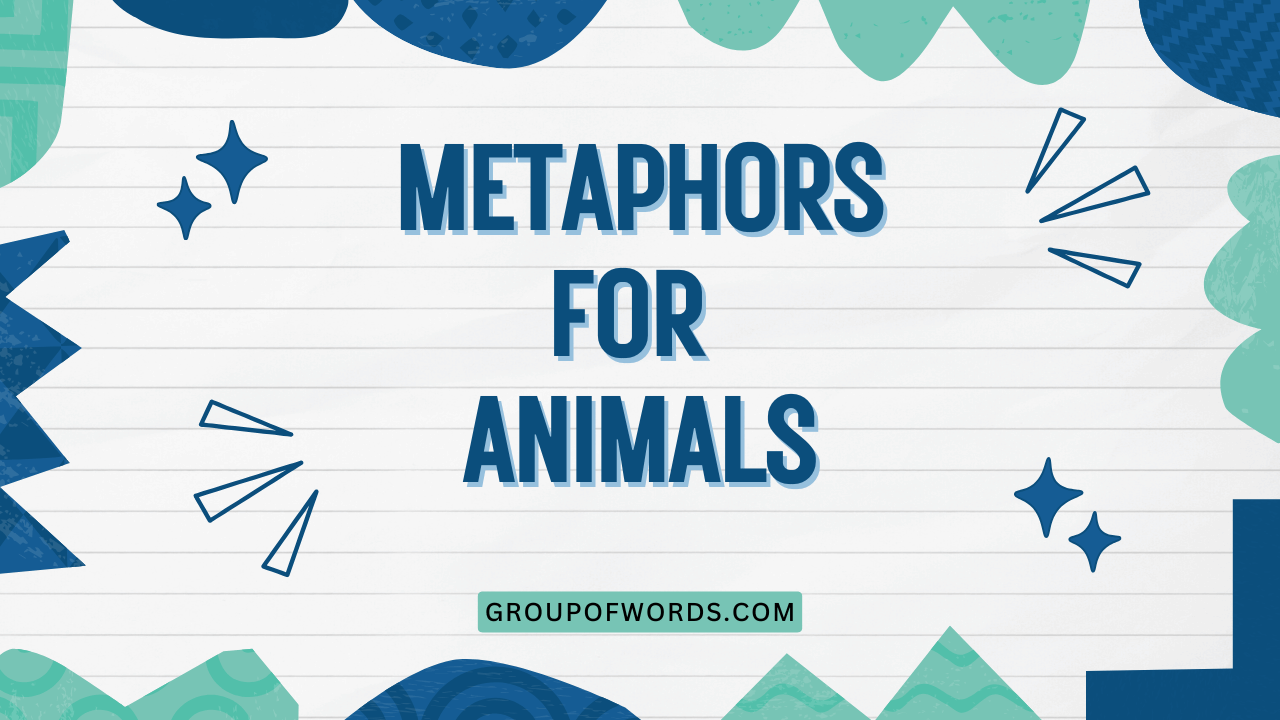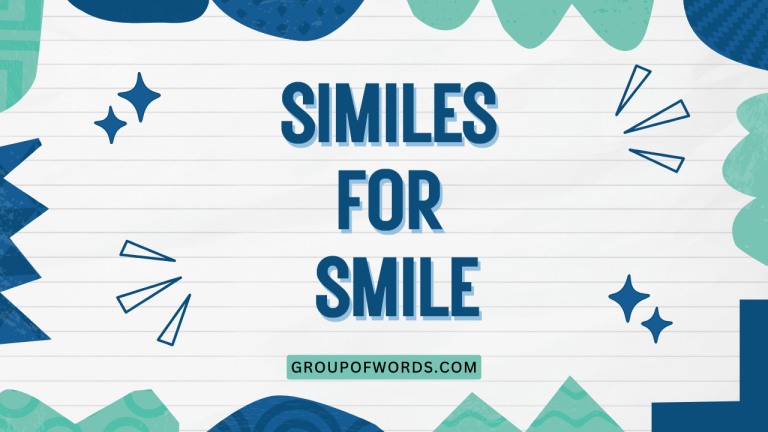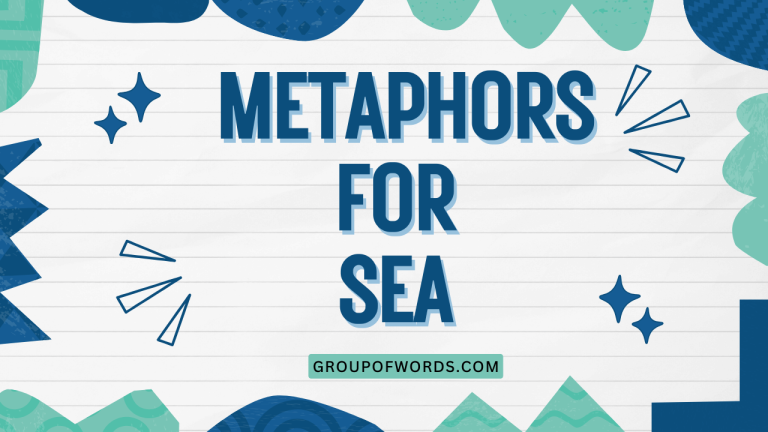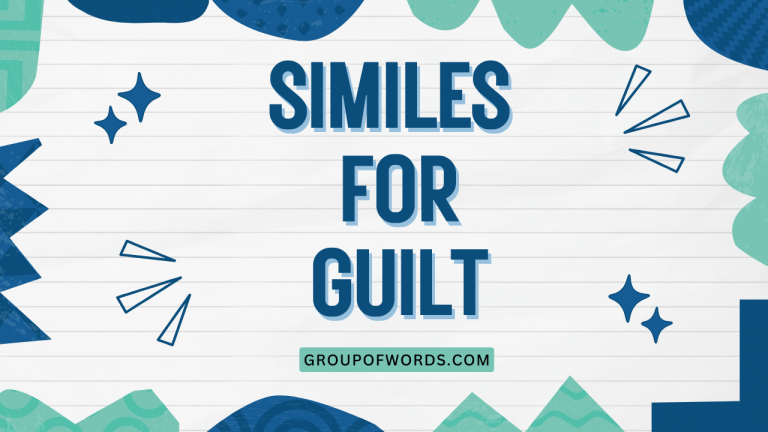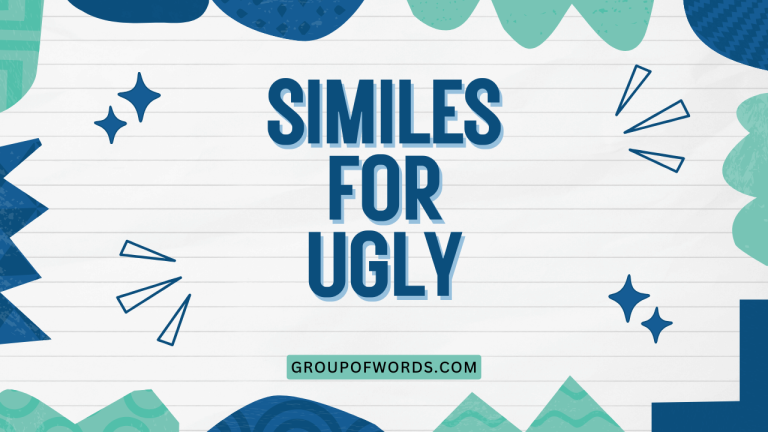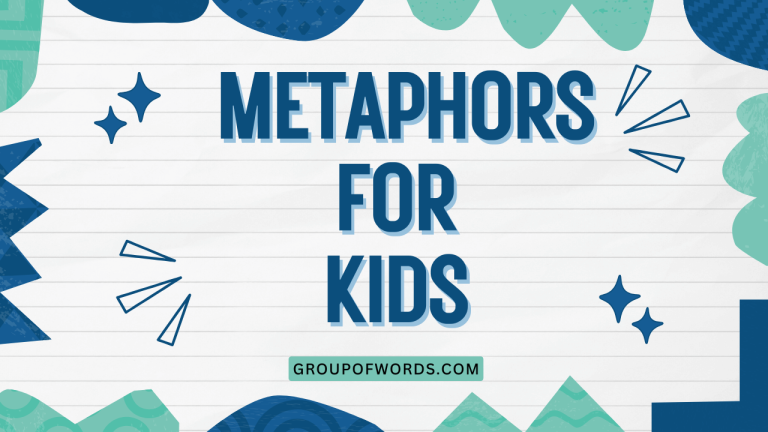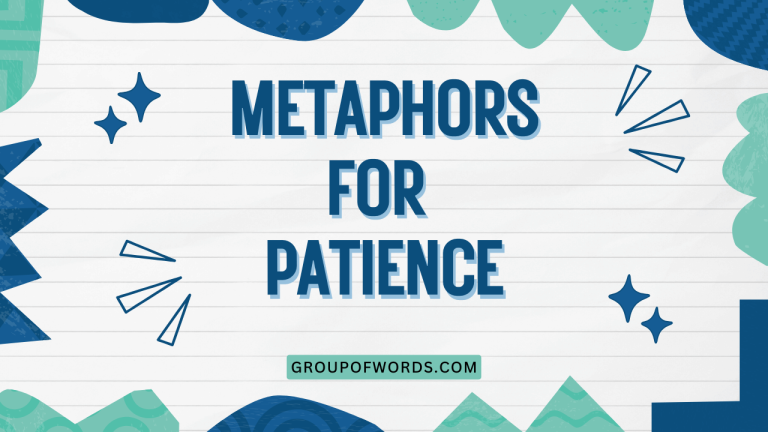Animal Metaphors: Understanding Figurative Language
Metaphors are powerful tools in the English language, allowing us to draw comparisons and create vivid imagery. One particularly engaging area is the use of animal metaphors.
Understanding these metaphors enriches your comprehension of both written and spoken English, enhancing your ability to express yourself with creativity and precision. This article explores the world of animal metaphors, providing definitions, examples, usage rules, and practice exercises to help you master this fascinating aspect of figurative language.
This knowledge is beneficial for English language learners, writers, and anyone looking to improve their communication skills by adding color and depth to their expression.
Table of Contents
- Definition of Animal Metaphors
- Structural Breakdown of Animal Metaphors
- Types of Animal Metaphors
- Examples of Animal Metaphors
- Usage Rules for Animal Metaphors
- Common Mistakes with Animal Metaphors
- Practice Exercises
- Advanced Topics in Animal Metaphors
- Frequently Asked Questions
- Conclusion
Definition of Animal Metaphors
An animal metaphor is a figure of speech that compares a person, object, or situation to an animal based on shared characteristics or perceived traits. Unlike similes, which use “like” or “as” to make a comparison, metaphors directly equate one thing to another.
Animal metaphors are effective because they tap into our existing knowledge and associations with specific animals, instantly conveying a particular quality or attribute.
For example, saying someone is “as sly as a fox” is a simile. However, saying “He’s a fox” is a metaphor.
The metaphor implies that the person is cunning, clever, and perhaps even deceptive, drawing on the widely recognized association of foxes with those qualities. Animal metaphors add color, depth, and emotional resonance to language, making it more engaging and memorable.
Classification of Animal Metaphors
Animal metaphors can be classified based on the type of trait being emphasized, such as:
- Personality Traits: Comparing someone to a lion for bravery or a sheep for meekness.
- Physical Attributes: Describing someone as a bear for their size or strength.
- Behavioral Characteristics: Likening someone to a busy bee for their industriousness.
- Negative Connotations: Referring to someone as a snake to imply treachery.
Function of Animal Metaphors
The function of animal metaphors is multifaceted. They serve to:
- Simplify complex ideas: By relating an abstract concept to a familiar animal.
- Evoke emotions: By tapping into the emotional associations we have with certain animals.
- Create vivid imagery: By painting a mental picture of the person or thing being described.
- Add emphasis: By highlighting a particular quality or characteristic.
Contexts for Using Animal Metaphors
Animal metaphors are used in various contexts, including:
- Literature: To develop characters, create atmosphere, and convey themes.
- Everyday Conversation: To add color and expressiveness to speech.
- Journalism: To create engaging headlines and descriptions.
- Political Discourse: To characterize opponents or policies.
- Business: To describe market trends or competitive strategies.
Structural Breakdown of Animal Metaphors
The basic structure of an animal metaphor involves equating a subject (the person, object, or situation being described) with an animal. This creates an implicit comparison based on shared characteristics.
The structure is typically simple, often consisting of a noun (the subject) linked to another noun (the animal) by a linking verb (usually “is” or “was”).
For example:
- Subject: John
- Linking Verb: is
- Animal: a lion
- Metaphor: John is a lion.
This structure can be expanded or modified to create more complex and nuanced metaphors. For example, adjectives can be added to further specify the qualities being attributed to the subject.
Example:
- Subject: The company
- Linking Verb: was
- Adjective: a predatory
- Animal: shark
- Metaphor: The company was a predatory shark in the market.
The effectiveness of an animal metaphor depends on the audience’s understanding of the animal’s perceived traits. If the association is not clear or widely recognized, the metaphor may fail to convey the intended meaning.
Types of Animal Metaphors
Positive Animal Metaphors
These metaphors use animals with positive connotations to describe desirable qualities.
- Lion: For courage, strength, and leadership.
- Bee: For industriousness, hard work, and community spirit.
- Eagle: For vision, freedom, and soaring ambition.
- Owl: For wisdom, intelligence, and perception.
- Dolphin: For playfulness, intelligence, and helpfulness.
Negative Animal Metaphors
These metaphors use animals with negative connotations to describe undesirable qualities.
- Snake: For treachery, deceit, and cunning.
- Pig: For greed, slovenliness, and selfishness.
- Rat: For disloyalty, sneakiness, and spreading disease.
- Vulture: For preying on the weak, greed, and ruthlessness.
- Worm: For worthlessness, weakness, and insignificance.
Neutral Animal Metaphors
These metaphors use animals with relatively neutral connotations, where the meaning depends heavily on context.
- Horse: For strength, stamina, and sometimes stubbornness.
- Dog: For loyalty, friendliness, or sometimes aggression.
- Cat: For independence, grace, or aloofness.
- Fox: For cleverness, adaptability, or sometimes deceit.
- Bear: For strength, protectiveness, or clumsiness.
Examples of Animal Metaphors
Here are some extensive examples of animal metaphors, categorized for clarity. These examples demonstrate how animal metaphors can be used to describe people, situations, and abstract concepts.
Animal Metaphors Describing People
The following table illustrates how animal metaphors are used to describe people’s characteristics and behaviors. Each entry provides the metaphor and the implied meaning.
| Metaphor | Implied Meaning |
|---|---|
| He’s a lion on the battlefield. | He is courageous and fierce in combat. |
| She’s a busy bee, always working. | She is industrious and hardworking. |
| My brother is a stubborn mule. | My brother is inflexible and resistant to change. |
| That politician is a snake. | That politician is treacherous and deceitful. |
| The child is a little monkey. | The child is mischievous and playful. |
| He is a wolf in sheep’s clothing. | He appears harmless but is actually dangerous. |
| She’s an eager beaver in the office. | She is enthusiastic and hardworking. |
| The old man is a wise owl. | The old man is knowledgeable and insightful. |
| He’s a real loan shark. | He charges excessively high interest rates. |
| She is a social butterfly. | She is outgoing and enjoys socializing. |
| He is a sitting duck. | He is vulnerable and an easy target. |
| She’s a night owl. | She prefers to be awake and active at night. |
| He is a pack rat. | He compulsively hoards items. |
| She is a scaredy cat. | She is easily frightened. |
| He’s a big fish in a small pond. | He is important in a limited environment. |
| She is a lone wolf. | She prefers to be alone and independent. |
| He is a copycat. | He imitates others. |
| She is a mother hen. | She is overly protective and nurturing. |
| He is a workhorse. | He is a reliable and tireless worker. |
| She is a drama queen. | She overreacts to situations. |
| He’s a real dog. | He’s unattractive or unpleasant. |
| She’s a lamb. | She is gentle and innocent. |
| He’s a hawk. | He is aggressive and supports military action. |
| She’s a chicken. | She is cowardly. |
| He’s a moose. | He is large and clumsy. |
| She’s a gazelle. | She is graceful and agile. |
Animal Metaphors Describing Situations
This table demonstrates animal metaphors used to describe different situations or events, highlighting the implied characteristics.
| Metaphor | Implied Meaning |
|---|---|
| The market is a jungle. | The market is chaotic and competitive. |
| The political arena is a dog-eat-dog world. | The political arena is ruthless and cutthroat. |
| The company is a cash cow. | The company generates a lot of profit. |
| The project was a wild goose chase. | The project was a futile and pointless endeavor. |
| The rumor spread like wildfire. | The rumor spread quickly and uncontrollably. |
| The team was like a pack of wolves. | The team was aggressive and relentless. |
| The negotiation was a cat-and-mouse game. | The negotiation involved strategic maneuvering and deception. |
| The economy is a sleeping bear. | The economy is currently inactive but has the potential to awaken. |
| The legal battle was a feeding frenzy for lawyers. | The legal battle generated a lot of fees for lawyers. |
| The competition was a shark tank. | The competition was fierce and aggressive. |
| The deal was a Trojan horse. | The deal appeared beneficial but contained hidden risks. |
| The scandal opened a can of worms. | The scandal revealed a series of complex and unpleasant problems. |
| The project was a white elephant. | The project was expensive and useless. |
| Their relationship is a bird in a gilded cage. | Their relationship appears luxurious but lacks freedom. |
| The situation is a rat race. | The situation is a competitive and exhausting struggle. |
| The project turned into a dog’s breakfast. | The project became a complete mess. |
| The event was a zoo. | The event was chaotic and disorganized. |
| The debate was like herding cats. | The debate was difficult to control. |
| The investment was a pig in a poke. | The investment was risky and uncertain. |
| The problem is the elephant in the room. | The problem is obvious but ignored. |
| The internet is a spider’s web. | The internet is complex and traps users. |
| His argument was a red herring. | His argument was a distraction from the real issue. |
| The news story was a scoop. | The news story was exclusive and important. |
| The company is a dinosaur. | The company is outdated and struggling to adapt. |
| The market is a bull market. | The market is rising and optimistic. |
| The market is a bear market. | The market is declining and pessimistic. |
Animal Metaphors Describing Abstract Concepts
This table shows animal metaphors used to describe abstract concepts, illustrating how these metaphors make complex ideas more relatable and understandable.
| Metaphor | Implied Meaning |
|---|---|
| Time is a river. | Time flows continuously and inexorably. |
| Poverty is a trap. | Poverty is a difficult situation to escape. |
| Love is a battlefield. | Love involves conflict and struggle. |
| Life is a rollercoaster. | Life has ups and downs. |
| Fear is a monster. | Fear is a powerful and destructive force. |
| Hope is a fragile butterfly. | Hope is delicate and easily crushed. |
| Memory is a fickle friend. | Memory is unreliable and can fade over time. |
| Knowledge is a treasure. | Knowledge is valuable and worth acquiring. |
| Success is a ladder. | Success requires climbing and effort. |
| Failure is a learning opportunity. | Failure provides valuable lessons and insights. |
| Art is a mirror. | Art reflects society and human nature. |
| Music is a universal language. | Music transcends cultural and linguistic barriers. |
| Politics is a dirty game. | Politics involves corruption and unethical behavior. |
| The mind is a garden. | The mind needs nurturing and care. |
| Dreams are a window to the soul. | Dreams reveal hidden desires and emotions. |
| The past is a ghost. | The past haunts us and influences our present. |
| The future is a blank canvas. | The future is full of possibilities and potential. |
| Education is a key to success. | Education opens doors and opportunities. |
| Technology is a double-edged sword. | Technology has both positive and negative consequences. |
| Change is the only constant. | Change is inevitable and unavoidable. |
| Stress is a silent killer. | Stress is dangerous and harmful to health. |
| Bureaucracy is a red tape. | Bureaucracy is excessively complicated and inefficient. |
| Rumors are poison. | Rumors are harmful and destructive to reputation. |
| Gossip is a disease. | Gossip spreads quickly and causes damage. |
| Truth is a precious gem. | Truth is valuable and rare. |
| Lies are a web. | Lies are complex and entangling. |
Usage Rules for Animal Metaphors
Using animal metaphors effectively requires careful consideration of context and audience. Here are some key rules to follow:
- Choose appropriate animals: Select animals whose perceived traits align with the intended meaning.
- Consider cultural connotations: Be aware that some animals have different meanings in different cultures.
- Avoid clichés: Try to use fresh and original metaphors to avoid sounding predictable.
- Maintain consistency: Ensure that the metaphor is consistent with the overall tone and style of your writing.
- Be mindful of your audience: Use metaphors that your audience will understand and appreciate.
Animal metaphors can enhance your writing and speech, but overuse can diminish their impact. Use them sparingly and strategically to achieve the desired effect.
Also, always remember the context, certain animal references can be offensive depending on cultural and social circumstances. For instance, comparing someone to certain animals can be seen as derogatory or insulting.
Exceptions and Special Cases
There are some exceptions and special cases to consider when using animal metaphors:
- Irony: Sometimes, animal metaphors can be used ironically to convey the opposite of their literal meaning.
- Humor: Animal metaphors can be used for comedic effect, especially when the comparison is unexpected or absurd.
- Personification: Animals can be personified to represent human qualities or behaviors.
Common Mistakes with Animal Metaphors
Here are some common mistakes to avoid when using animal metaphors:
| Incorrect | Correct | Explanation |
|---|---|---|
| He is as lion. | He is a lion. | Metaphors don’t use “as” or “like”; that’s a simile. |
| She is a shark in the ocean. | She is a shark. | The context is usually implied. |
| The project was a cat. | The project was a white elephant. | The metaphor must make sense and have a clear association. |
| He is a sheep in wolf’s clothing. | He is a wolf in sheep’s clothing. | The correct idiom should be used. |
| The market is a dog. | The market is a dog-eat-dog world. | The metaphor needs to be complete and meaningful. |
| She sings like a bird (when she squawks). | She squawks like a bird. | Ensure the comparison is accurate; otherwise, it’s confusing. |
| He is a turtle, fast and agile. | He is a cheetah, fast and agile. | Choose an animal whose traits match the description. |
| The meeting was a zoo, but organized. | The meeting was a zoo. | Avoid contradictory descriptions. |
Practice Exercises
Test your understanding of animal metaphors with these practice exercises.
Exercise 1: Identifying Animal Metaphors
Identify the animal metaphor in each sentence and explain its implied meaning.
| Question | Answer |
|---|---|
| 1. The lawyer was a shark in the courtroom. | Shark: Ruthless, aggressive, and predatory. |
| 2. The politician is a fox. | Fox: Cunning, clever, and deceptive. |
| 3. She is a social butterfly at parties. | Butterfly: Outgoing, sociable, and flitting from person to person. |
| 4. My neighbor is a pack rat. | Pack rat: Hoards items and collects things compulsively. |
| 5. The economy is a sleeping bear. | Sleeping bear: Inactive but with the potential to awaken and become powerful. |
| 6. He’s an eager beaver when it comes to work. | Eager beaver: Enthusiastic, hardworking, and diligent. |
| 7. The project turned into a wild goose chase. | Wild goose chase: A futile and pointless endeavor. |
| 8. She’s a mother hen to her colleagues. | Mother hen: Overly protective, nurturing, and caring. |
| 9. He’s a sitting duck in that situation. | Sitting duck: Vulnerable, an easy target, and defenseless. |
| 10. The debate was like herding cats. | Herding cats: Difficult to control and manage. |
Exercise 2: Creating Animal Metaphors
Create an animal metaphor to describe each of the following people or situations.
| Description | Answer |
|---|---|
| 1. A brave firefighter | He is a lion in the face of danger. |
| 2. A chaotic office | The office is a zoo. |
| 3. A persistent salesperson | She is a bloodhound on the trail of a sale. |
| 4. A stubborn child | He is a stubborn mule. |
| 5. A deceitful friend | He is a snake in the grass. |
| 6. An efficient worker | She is a busy bee. |
| 7. A slow driver | He’s a tortoise on the road. |
| 8. A graceful dancer | She is a gazelle on the dance floor. |
| 9. A strong leader | He is an alpha wolf. |
| 10. An annoying person | He’s a mosquito at a picnic. |
Exercise 3: Correcting Incorrect Animal Metaphors
Identify and correct the incorrect animal metaphors in the following sentences.
| Incorrect Sentence | Correct Sentence |
|---|---|
| 1. He is as brave as a chicken. | He is as brave as a lion. |
| 2. The market is a cat-and-dog game. | The market is a dog-eat-dog world. |
| 3. She is a wolf in sheep clothing. | She is a wolf in sheep’s clothing. |
| 4. He is a fish out of water on land. | He is a fish out of water. |
| 5. The project was a wild elephant chase. | The project was a wild goose chase. |
| 6. She is an eager bear in the office. | She is an eager beaver in the office. |
| 7. He’s a standing duck in that situation. | He’s a sitting duck in that situation. |
| 8. The debate was like herding wolves. | The debate was like herding cats. |
| 9. He’s a loan bird. | He’s a loan shark. |
| 10. She’s a social horsefly. | She’s a social butterfly. |
Advanced Topics in Animal Metaphors
For advanced learners, consider exploring the following topics:
- Extended Metaphors: Developing a single animal metaphor throughout an entire piece of writing.
- Mixed Metaphors: Combining different metaphors, sometimes unintentionally creating humorous or nonsensical effects.
- Cultural Variations: Researching how different cultures use animal metaphors and the unique connotations associated with specific animals.
- Subverted Metaphors: Using animal metaphors in unexpected or ironic ways to challenge conventional assumptions.
Examining literature and analyzing how authors use animal metaphors can provide valuable insights into the art of figurative language. Pay attention to the context, the author’s intent, and the overall impact of the metaphors on the reader.
Frequently Asked Questions
- What is the difference between a simile and a metaphor?
A simile uses “like” or “as” to make a comparison, while a metaphor directly equates one thing to another. For example, “He is as strong as a lion” is a simile, while “He is a lion” is a metaphor.
- Why are animal metaphors so effective?
Animal metaphors are effective because they tap into our existing knowledge and associations with specific animals, instantly conveying a particular quality or attribute. This allows for a quick and vivid understanding.
- How can I avoid using clichés when using animal metaphors?
To avoid clichés, try to think of fresh and original comparisons. Instead of saying “He is as brave as a lion,” you could say “He is a grizzly bear protecting its cubs,” which conveys a similar sense of strength and protectiveness but is less common.
- Are animal metaphors universal across cultures?
No, animal metaphors are not universal. Different cultures have different associations with animals. What is considered positive in one culture may be negative in another. Always research the cultural connotations of an animal before using it in a metaphor.
- Can animal metaphors be offensive?
Yes, animal metaphors can be offensive if they are used to insult or demean someone. Be mindful of the connotations of the animal you are using and avoid making comparisons that could be considered derogatory or disrespectful.
- How do I identify a mixed metaphor?
A mixed metaphor combines two or more incompatible metaphors, often creating a nonsensical or humorous effect. For example, “Let’s nip it in the bud before it snowballs out of control” mixes the metaphors of stopping something early and something growing exponentially. Look for phrases that don’t logically fit together.
- What is an extended animal metaphor?
An extended animal metaphor is a metaphor that is developed over several lines or even an entire piece of writing. The writer continues to draw comparisons between the subject and the animal, exploring different aspects of their shared characteristics. This creates a richer and more complex image in the reader’s mind.
- How do I choose the right animal for my metaphor?
Consider the specific qualities or characteristics you want to emphasize. Research different animals and their perceived traits. Choose an animal whose associations align with the intended meaning. For example, if you want to convey intelligence, you might choose an owl; if you want to convey cunning, you might choose a fox.
Conclusion
Animal metaphors are a vibrant and engaging aspect of the English language. By understanding their structure, function, and usage rules, you can enhance your ability to express yourself with creativity and precision.
Remember to choose appropriate animals, consider cultural connotations, and avoid clichés. Practice identifying and creating animal metaphors to master this fascinating area of figurative language.
With careful attention and practice, you can effectively use animal metaphors to add color, depth, and emotional resonance to your writing and speech. Keep exploring language and its creative possibilities!
